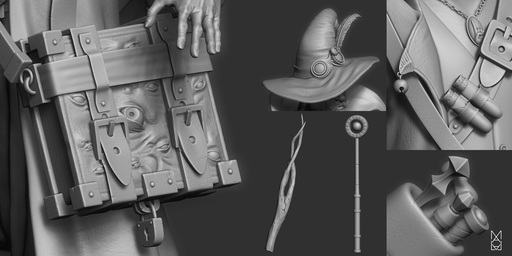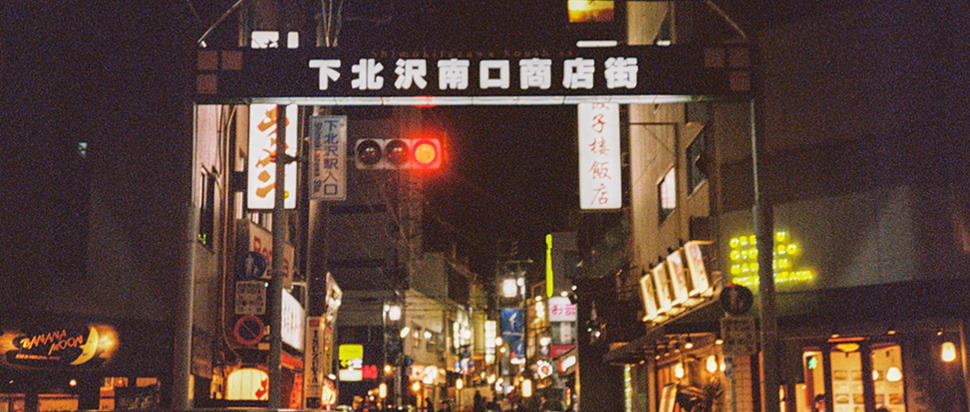GSA Degree Show 2024: School of Innovation and Technology
Work from the School of Innovation and Technology includes material product and service design, alongside experiences realised through specialist digital visualisation across medicine, games, heritage, immersive systems design and virtual reality
The Immersive Systems Design programme’s studio project is self-directed. Students have the opportunity to explore two distinct pathways – 3D Modelling or Games & Virtual Reality (VR).
Metal Head is a fast-paced 2D cyberpunk side-scrolling action shooter set within an 80s universe, realised in retro pixel art. Developed by Omar Said, the Metal Head demo features a short, fast-paced narrative. The game was developed alongside a custom weighted controller to enrich the play experience and provide greater immersion and feedback in VR.
As part of the 3D modelling pathway, Jaime Ojeda has designed and modelled three fantasy Dungeons and Dragons characters for his studio project, A Basic Adventure – 'The Wizard', 'The Rogue' and 'The Barbarian'. A ‘Dark Space Marine’ is Jamie’s fourth character, designed for the programme’s VR module. The VR demo with the Marine allows users to assemble a suit of armour and inspect each piece in a virtual 3D space as they construct the armour on a mannequin.
Ryan Sims, studying Games & Virtual Reality, explores the potential for filmmaking in commercial game engines. Ryan explored cinematography, lighting and sound in the Unity and Unreal Engines. His studio project explored the cinematic potential of Unreal engine which is growing in popularity in film production. As for Unity, he chose a more indie feel with MONO-NYCTO, a demo horror experience. The player must move safely through a park in the middle of the night to meet up with their friend. MONO-NYCTO strongly emphasises audio, designed to play off the fear of being alone at night.

Immersive Systems Design. Image: Jaime Ojeda.
With a love of narrative and compelling stories, Ainoha Sichlidou-Hennessy uses her passion for narrative design to discuss sensitive concepts. Using the Unity Engine as an interactive storytelling device, she produced Boxed In, a game which explores a child's experience in a hoarder's home. Ainoha weaves a story that follows a child's quest for a treasured toy but also delves into deeper, more complex themes of trauma and its rippling effects on family dynamics. Showing that games as a medium can explore sensitive topics and have the potential for thought-provoking narratives, Boxed In is a humble contribution to conversations about childhood trauma, hope, and the complexity of family.
Cardboard City is Sound for the Moving Image student Kyle Martin's reflection on consumerism and homelessness. This audio-visual [AV] installation uses projection mapping to apply visuals to the sides of cardboard boxes, which begin their life as packaging for products, and once disposed of can become shelter for someone without a home. Increasingly aware of the impact of plastic on the environment and how much plastic the music industry produces through records and streaming services, Kyle explores the life span of a vinyl album. He pressed his own record which degrades slowly as it plays on a loop, with degradation emerging as the primary motif of Cardboard City.
Connor Kyle’s film reel accompanies a soundscape of Japanese music. In March, he took recording equipment to Japan to document sounds to accompany his Degree Show. The national music of Japan is shown as a melting pot of several cultural and social influences. Folk music, European Classical, American Rock and Traditional Chinese music are some of the ingredients from which Japanese sound is born, and becomes the backdrop for Connor’s exhibition.

Product Design. Image: Rosina Scarano.
The Product Design programme has focused on the theme of a ‘Better World’ this year, focusing on improving people’s lives and the environment through creative thinking and innovation. Ruby is Rosina Scarano's service plan for a menstruation education aid in secondary schools. Ruby brings accessible education and open conversation about menstruation to everyone, with menstrual health not openly discussed in schools. Growing up through secondary school, Rosina felt more education is needed on menstruation and menstrual health. Ruby is designed as a month-long pop-up health facility that would tour Scottish schools, with its proposed second phase finding a permanent place somewhere in Glasgow.
Ian Bownes' project aims to increase sustainable tourism in Bali. Tourism in Bali is an environmentally destructive industry, and Ian has produced a set of artefacts such as cups, bowls and cutlery cast from local single-use plastic waste. As a creative solution to single waste plastic with a local touch, tourists can invest in and own their own set of individual artefacts for their holiday and to keep as a memento of their trip. This process promotes closing the circular recycling loop by encouraging tourists to bring their single-use plastics to craft shops, allowing local craftspeople to bring their skill set and aesthetic to the curation of these purposeful artefacts.
School of Innovation and Technology Degree Show, Haldane Building, 31 May-9 Jun
